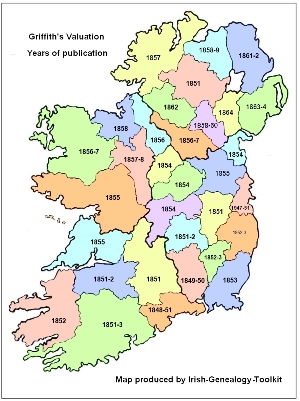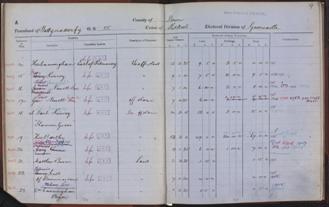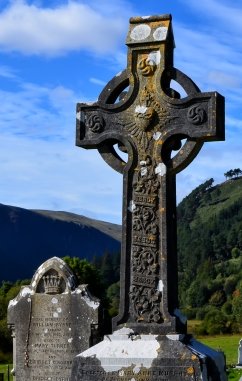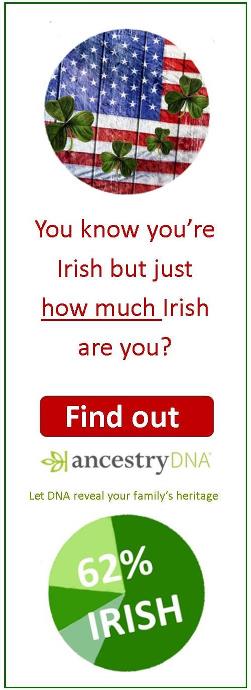- Home ›
- Irish Land records ›
- Valuation Revision Books
Advanced research in the post-publication manuscripts
Revision Books, Cancelled Books and Current Land Books are resources for advanced study of Griffith's Valuation.
The terms cover the same group of documents.
They relate to manuscripts in which, following the publication of each volume of the Primary Valuation of Tenements, the Valuation Office recorded any changes to occupier, landlord, size of holding or value for each plot.
Are you new to Griffith's Valuation?
This page deals with fairly advanced research. If you're new to Irish land records, or just want a good overview of what this resource offers, you should starting on the Griffith's Valuation page and get to grips with the Primary Valuation of Tenements first.
These changes, or revisions, were recorded on an annual basis, directly into the books. So if, for example, your ancestor, John Leary, sold the old homestead in County Cork in 1863 (ten years after the Primary Valuation was completed in that county... see map), the new owner's name would have been noted in the Current Land Book that covered that townland and that exact plot of land.
The Current Land Books are exactly what you'd expect from the name – the books hold the most up to date or recent revisions for each plot.
So in the case of John Leary's sale, the new owner's details would have been recorded in what was, in 1860, the Current Land Book.
When that book became so full of revisions that it could hardly be deciphered, it would have been marked up as a Cancelled Land Book and a new Current Land Book would have been started.
The term 'Valuation Revision Books' can be used generically for both Cancelled and Current Land Books. In practice, the term Revision Books tends to be used in Northern Ireland; the Republic usually differentiates between Cancelled or Current Land Books.
How the revision books system works - LAP: Land Act Purchase
The Land Commission was created by the 1881 Land Act. In the latter part of the 19th century and early 20th, people who occupied land were given assistance to buy it. As a result you'll see many entries in the Revision Books marked as In Fee, which meant that the occupier had become the owner. You may also see noted (often by a stamp) the letters LAP; this means the occupier has been given assistance by the Land Commission to complete the purchase.
The Primary Valuation of Tenements was published county-by-county between 1848 and 1864. From 1852, a system for annual revisions was introduced for those counties that had been 'published'. In fact, few revisions were recorded until the 1860s, by which time the Valuation for ALL counties had been published.
From then until the mid-1970s (only until the 1930s in Northern Ireland), all changes in holdings were hand-written into the Current Land Books.
Each annual round of revisions was allocated a coloured ink code. For example, when I look at the revision book for the townland of Curragh in Co Cork, where my paternal family lived, I can see that all revisions for 1915 were noted in purple ink, those for 1921 were recorded in permanent red ink, and those for 1929 in green . Although the dates are recorded, the colour coding helps to maintain some level of legibility over many years.
When a change of occupancy occurred, the name of the previous householder or owner was crossed through and the new owner's name written above it. In the same colour ink, there will be a date (usually just the year) recorded in the right hand column.
All manner of observations are also noted to the size or physical structure of the land/property holding.
These annual revisions can be extremely useful for helping genealogists to calculate significant dates in their family's history such as dates of emigration or death, and to help find living descendents.
Where to view Valuation Revision books
The manuscript Revision books for Northern Ireland are held by PRONI - the Public Records Office of Northern Ireland - in Belfast. They have been digitised and are now available, free to view, on the Revision Books section of PRONI's website.
The collection is available as a fully searchable placename index to the Valuation Revision Books covering counties Antrim, Armagh, Down, Fermanagh, Londonderry and Tyrone between the years 1864 to 1933. A small number (44 out of a collection of some 3,900 volumes) were not included in the initial online upload; they will be added in due course.
The Cancelled Books and the Current Land Books for the Republic of Ireland are available to personal callers at the Valuation Office, Irish Life Centre, Lower Abbey Street, Dublin 1. They are not online. The collection is gradually being scanned, county by county. As each county is finished, the manuscript books are being moved to storage and visitors are offered only the scanned copies to view on computer terminals.
At October 2022, the books from nineteen counties and three cities had been scanned, so the project is at least three-quarters completed.
The Valuation Office plans to complete the digitisation and upload the searchable copies to an online database by the end of 2023. This database will be free to access.
Where next?
- See the main menu of Land & Property resources.
Advanced research in the post-publication manuscripts
Revision Books, Cancelled Books and Current Land Books are resources for advanced study of Griffith's Valuation.
The terms cover the same group of documents.
Revision Books are manuscripts in which, following the publication of each volume of the Primary Valuation of Tenements, the Valuation Office recorded any changes to occupier, landlord, size of holding or value for each plot.
These changes, or revisions, were recorded on an annual basis, directly into the books.
So if, for example, your ancestor, John Leary, sold the old homestead in County Cork in 1863 (ten years after the Primary Valuation was completed in that county... see map), the new owner's name would have been noted in the Current Land Book that covered that townland and that exact plot of land.
The Current Land Books are exactly what you'd expect from the name – the books hold the most up to date or recent revisions for each plot.
So, in the case of John Leary's sale, the new owner's details would have been recorded in what was, in 1860, the Current Land Book.
Are you new to Griffith's Valuation?
This page deals with fairly advanced research. If you're new to Irish land records, or just want a good overview of what this resource offers, you should starting on the Griffith's Valuation page and get to grips with the Primary Valuation of Tenements first.
When that book became so full of revisions that it could hardly be deciphered, it would have been marked up as a Cancelled Land Book and a new Current Land Book would have been started.
The term 'Valuation Revision Books' can be used generically for both Cancelled and Current Land Books.
In practice, the term Revision Books tends to be used in Northern Ireland; the Republic usually differentiates between Cancelled or Current Land Books.
The Primary Valuation of Tenements was published county-by-county between 1848 and 1864. From 1852, a system for annual revisions was introduced for those counties that had been 'published'. In fact, few revisions were recorded until the 1860s, by which time the Valuation for ALL counties had been published.
From then until the mid-1970s (only until the 1930s in Northern Ireland), all changes in holdings were hand-written into the Current Land Books.
How the revision books system works - LAP: Land Act Purchase
The Land Commission was created by the 1881 Land Act. In the latter part of the 19th century and early 20th, people who occupied land were given assistance to buy it. As a result you'll see many entries in the Revision Books marked as In Fee, which meant that the occupier had become the owner. You may also see noted (often by a stamp) the letters LAP; this means the occupier has been given assistance by the Land Commission to complete the purchase.
Each annual round of revisions was allocated a coloured ink code. For example, when I look at the revision book pages for the townland of Curragh in Co Cork, where my paternal family lived, I can see that all revisions for 1915 were noted in purple ink, those for 1921 were recorded in permanent red ink, and those for 1929 in green . Although the dates are recorded, the colour coding helps to maintain some level of legibility over many years.
When a change of occupancy occurred, the name of the previous householder or owner was crossed through and the new owner's name written above it. In the same colour ink, there will be a date (usually just the year) recorded in the right hand column.
All manner of observations are also noted to the size or physical structure of the land/property holding.
These annual revisions can be extremely useful for helping genealogists to calculate significant dates in their family's history such as dates of emigration or death, and to help find living descendents.
Where to view Valuation Revision books
The manuscript Revision books for Northern Ireland are held by PRONI - the Public Records Office of Northern Ireland - in Belfast. They have been digitised and are now available, free to view, on the Revision Books section of PRONI's website.
The collection is available as a fully searchable placename index to the Valuation Revision Books covering counties Antrim, Armagh, Down, Fermanagh, Londonderry and Tyrone between the years 1864 to 1933. A small number (44 out of a collection of some 3,900 volumes) were not included in the initial online upload; they will be added in due course.
The Cancelled Books and the Current Land Books for the Republic of Ireland are available to personal callers at the Valuation Office, Irish Life Centre, Lower Abbey Street, Dublin 1. They are not online. The collection is gradually being scanned, county by county. As each county is finished, the manuscript books are being moved to storage and visitors are offered only the scanned copies to view on computer terminals.
At October 2022, nineteen counties and three cities had been scanned, so the project is at least three-quarters completed.
The Valuation Office plans to complete the digitisation and upload the searchable copies to an online database by the end of 2023. This database, like that for Northern Ireland's Revision Books held by PRONI, will be free to access.
Where next?
- See the main menu of Land & Property resources.




